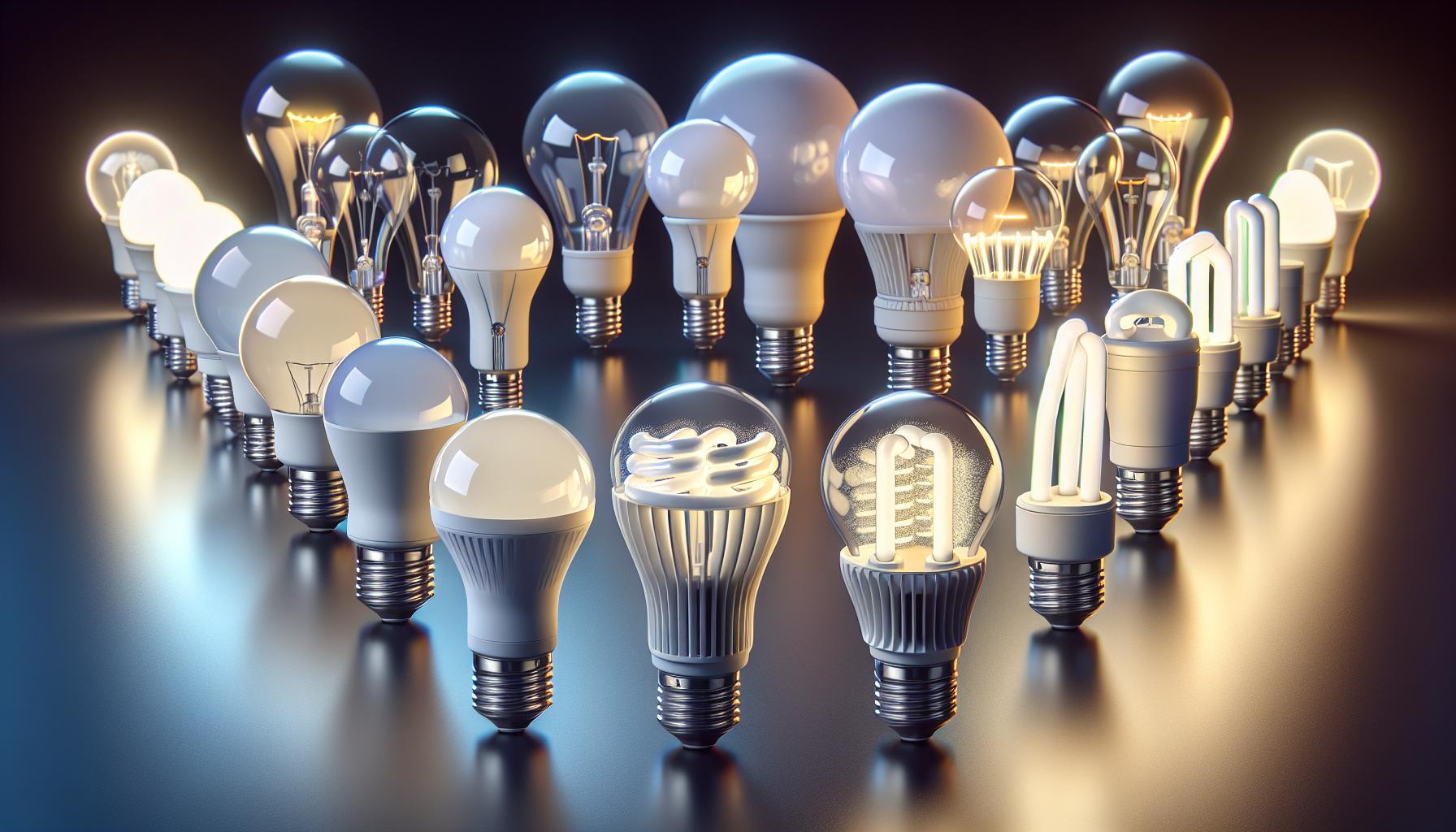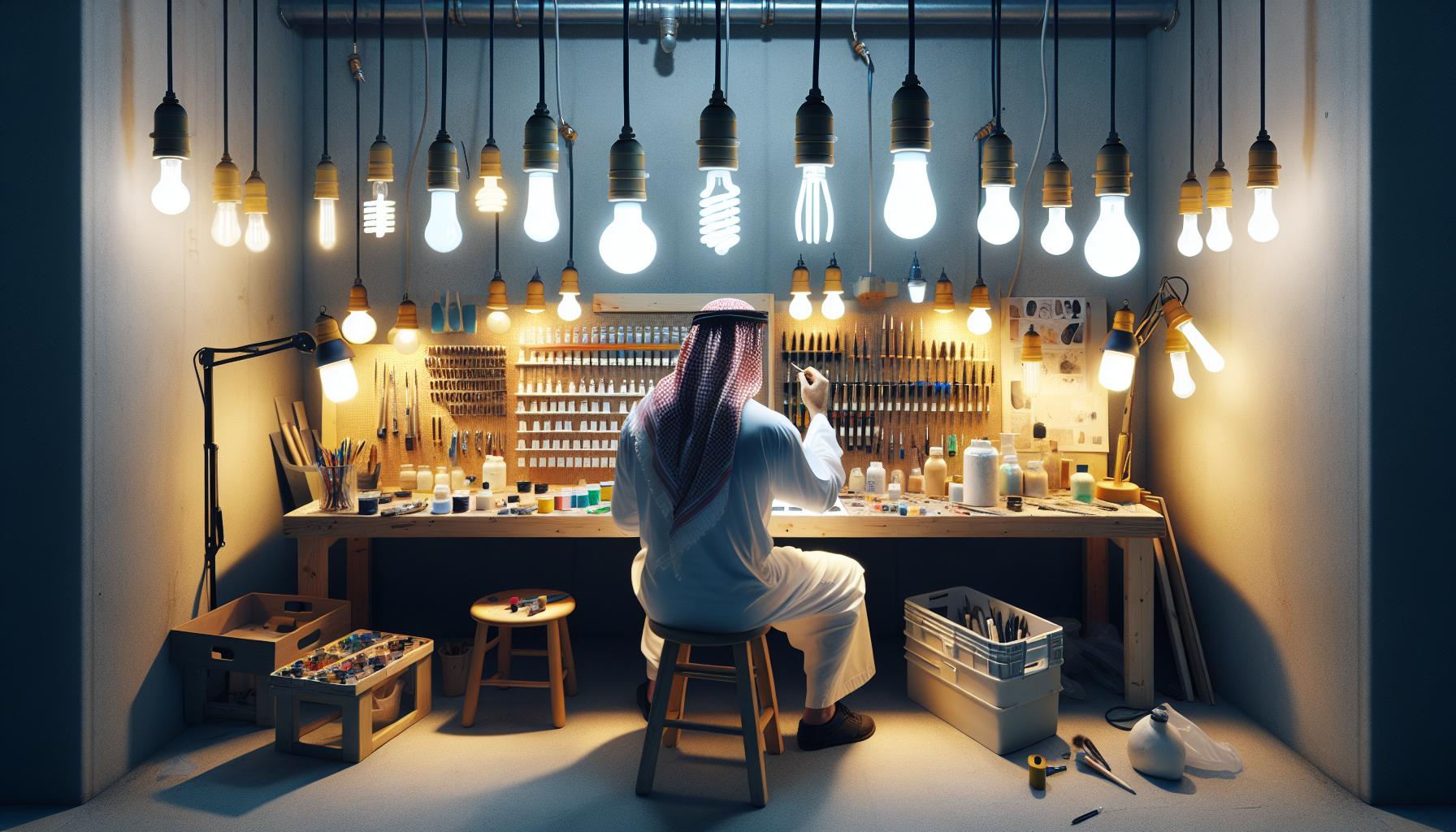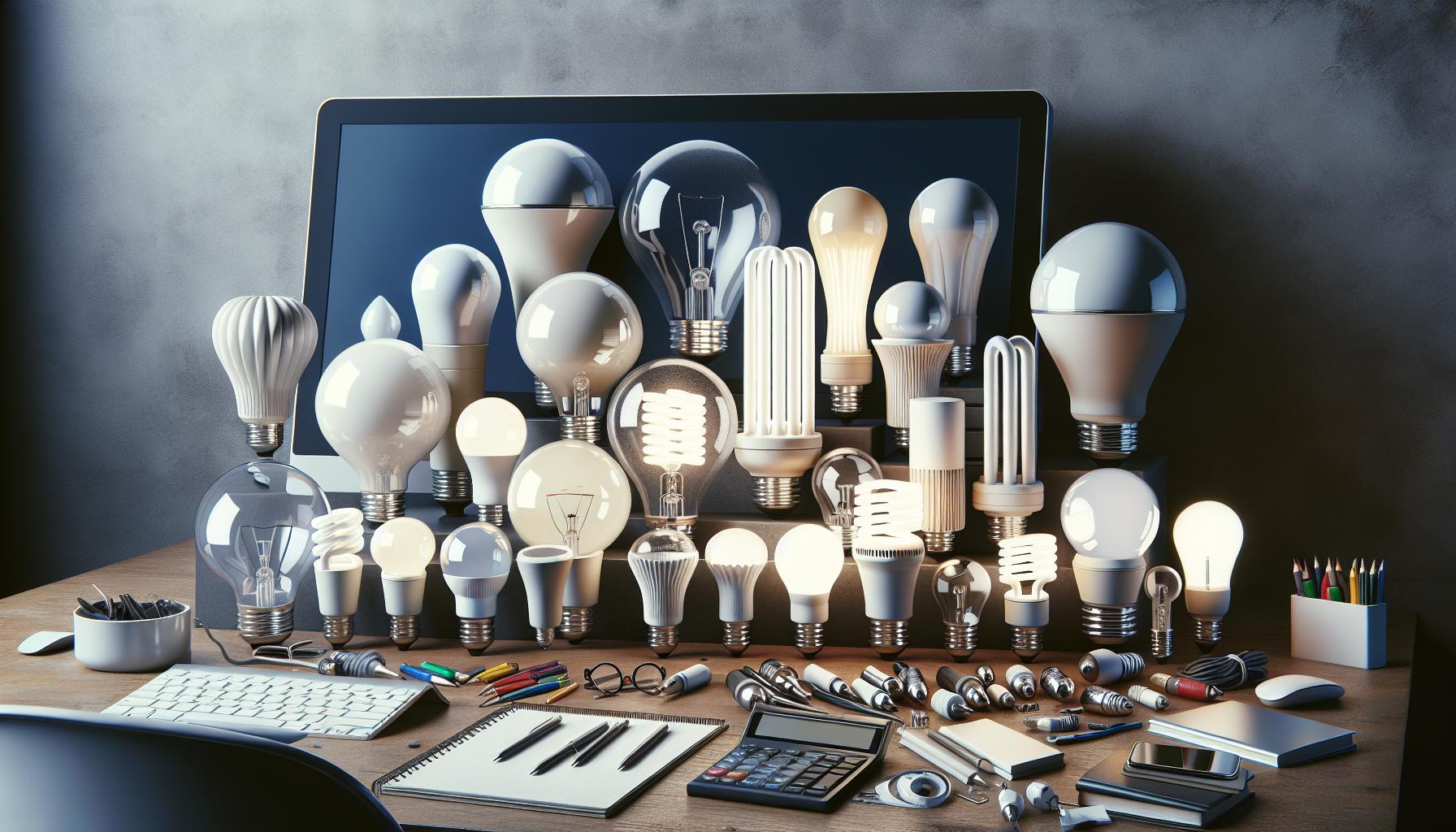Ever wondered if flipping on a light could give you a sun-kissed glow? It’s not as far-fetched as you might think. Indoor lighting is an integral part of your life, but there’s more to those bulbs than just illuminating your space.
You might be surprised to learn that certain types of light bulbs can actually contribute to tanning. It’s not just about basking in the sun anymore; your very own living room could be a tanning booth in disguise. Let’s dive into the science behind this illuminating idea and see what’s really going on when you light up your world.
How Different Types of Light Bulbs Work
Delving into the mechanics of light bulbs will help you better understand their potential tanning effects. Light bulbs, after all, aren’t just spheres of light—they’re marvels of human ingenuity. Imagine the bulb; it’s not just a fixture, it’s a vessel of invisible energy transformed into visible light.
Incandescent bulbs, the classics, glow from a wire filament heating up by electrical current until it’s white-hot. They emit a warm, yellowish light that’s cozy, but they’re energy hogs and give off plenty of heat. Most of their energy is, in fact, converted into heat rather than light.
Compact fluorescent lamps (CFLs) took over with a promise of efficiency. These spiraled wonders use an electric current to excite mercury vapor, which in turn emits ultraviolet (UV) light. The UV light then interacts with a fluorescent coating inside the bulb to produce visible light. While they use less energy and last longer than incandescents, CFLs are not favorites for everyone mainly because of their color range and the presence of mercury.
LEDs or light-emitting diodes are the current champions of the light bulb world. These semiconductor devices convert electricity directly into light, and they’re adept at doing so without much waste heat. Because of this, LEDs are incredibly energy-efficient and have a long lifespan. But what sets LEDs apart is their range—capable of emitting various colors and light temperatures, from warm yellows to the bright blues that could impact your skin.
| Bulb Type | Energy Used for Light | Heat Emitted | UV Radiation | Lifespan |
|---|---|---|---|---|
| Incandescent | Low | High | Low | 750-2,000 hrs |
| CFL | Moderate | Moderate | Moderate | 8,000 hrs |
| LED | High | Low | Variable | 25,000+ hrs |
Given that some of the light emitted by these bulbs falls within the ultraviolet spectrum, it’s plausible to think they could have an effect akin to a very mild tanning bed. The aspect of how light affects the skin arises from the UV portion of the spectrum, particularly UVA and UVB rays which are the main contributors to the tanning effect from the sun.
The Science Behind Tanning
When you’re embarking on a home DIY project, it’s essential to consider the type of lighting you’ll use, not just for ambiance but also for health implications. Understanding the science behind tanning can help you make informed decisions. Essentially, tanning is your skin’s response to ultraviolet (UV) radiation. This natural defense mechanism aims to protect your deeper skin layers from damage.
UVA and UVB rays play a pivotal role in this process. UVA rays penetrate the skin more deeply, contributing to aging and long-term skin damage. Conversely, UVB rays mostly affect the outer skin layers, causing sunburns and playing a significant role in developing skin cancer. Your body responds to these rays by producing melanin, the pigment that colors your skin and gives you that tanned look.
Light bulbs, as part of their spectrum, can emit UV radiation, though typically at much lower intensities than the sun. Incandescent bulbs emit a trivial amount of UV, whereas CFLs and LEDs may emit slightly higher levels. However, it’s the duration and proximity to these light sources that could potentially increase your exposure to UV radiation. While standard domestic lighting conditions are unlikely to cause significant tanning, specific scenarios, such as close, prolonged exposure to certain types of UV-emitting bulbs, may have a more substantial effect.
When selecting lighting for your home, consider bulbs with a low UV output or those with a UV filter. This can be especially important for areas where you spend a lot of time, such as your home office or reading nook. Moreover, remember that certain tasks—like painting your walls or installing fixtures—often mean prolonged exposure to light at close range, which reinforces the need for careful light bulb selection.
It’s fascinating how light not only serves functional and aesthetic purposes but also interacts with our bodies in complex ways. Keep this in mind as you choose the right lighting solutions for your DIY projects. Safety and the effects on your health should always be a top priority, guiding your decisions alongside efficiency and style.
UVA, UVB, and Tanning
« What Can You Use Instead of Light Bulbs? Discover Smart Lighting Alternatives
What Do You Use Light Bulbs For in FarmVille 2? Unlock Quests & Decor Tips »
When you’re embarking on a home DIY project, lighting is a critical aspect you’ll need to consider. It’s not just about ensuring that you have enough light to work by; the type of light you’re exposed to is just as important, especially when it concerns your skin’s health.
Let’s talk about UVA and UVB rays—these are the culprits when it comes to tanning. UVA rays penetrate the skin more deeply and are primarily responsible for immediate tanning, while UVB rays affect the outer layer of skin and are the main cause of sunburn. Together, they contribute to the longer-term risks associated with sun exposure, like premature aging and skin cancer.
Most light bulbs don’t emit levels of UV radiation strong enough to cause a tan. However, certain types of bulbs, particularly those used in tanning beds, are designed to emit UV rays similar to the sun. For your everyday activities though, you’d typically encounter bulbs with significantly lower UV emission.
If you’re working close to light bulbs for extended periods in your DIY endeavors, you might want to look into the type of bulbs you’re using. LED and fluorescent bulbs can emit a small amount of UV radiation, and while normally safe, prolonged exposure at close range could potentially affect your skin.
To minimize any risk of UV exposure from artificial lighting:
- Choose bulbs labelled as low UV or with a UV filter
- Consider the distance and duration you’re exposed to the bulbs
- Use additional protective measures like UV film on windows or UV-protective clothing if necessary
Can Light Bulbs Cause Tanning?
When you’re knee-deep in your latest home DIY project, lighting is crucial, not just for precision and aesthetics but also for your skin’s health. You may wonder whether the bulbs illuminating your space can contribute to a tan similar to the sun’s natural rays. The answer isn’t as straightforward as a simple yes or no.
Indoor lighting varies significantly, and its effect on your skin depends on several factors, including the type of bulb and duration of exposure. Standard incandescent bulbs generally emit very little UV radiation, posing minimal risk for tanning. However, the game changes when you look at modern lighting solutions like fluorescent or LED bulbs. These can emit UV radiation at levels that might affect your skin over time.
- LEDs have become prevalent due to their energy efficiency and long lifespan. While the UV emission from LEDs is typically low, some bulbs may release a bit more, especially in the UVA spectrum which can lead to tanning.
- Fluorescent lights, which include CFLs, have a phosphor coating that absorbs UV light and re-emits it as visible light. However, some UV can escape, especially if the bulb’s coating is compromised.
In your DIY workspace, you’re likely to spend prolonged hours under artificial lighting. Therefore, it’s essential to consider the potential cumulative effect of this exposure. Research suggests that chronic exposure to UV radiation, even at low levels, can cause skin damage over time. To minimize risk, look for bulbs specifically designed to reduce UV radiation.
Moreover, you might be interested in the Color Rendering Index (CRI) of your bulbs, which impacts how colors look under the light. High CRI values often mean better color accuracy, an aspect you don’t want to overlook in your projects. Balancing the need for color precision and skin safety adds another layer to your lighting choices.
Remember, your workspace is your haven. You want to ensure you’re protecting your skin as diligently as you’re perfecting your DIY creations. Opt for high-quality lighting that safeguards your health while rendering colors truly and vibrantly. Enjoy the brilliance of well-lit spaces without compromising your well-being.
Factors to Consider
When exploring whether light bulbs can contribute to tanning, you need to take into account several key factors that influence the outcome. Your goal is to create a safe and effective work environment, especially for those who love to roll up their sleeves and dive into DIY projects.
Type of Light Bulb
Not all light bulbs are created equal when it comes to UV emission:
- Incandescent bulbs: Emit a negligible amount of UV radiation.
- Fluorescent bulbs: Higher in UV radiation, particularly UVA, which can contribute to skin changes with prolonged exposure.
- LED bulbs: Can vary significantly in UV output; some may emit more UV radiation than others.
When you’re illuminating your workspace, it’s crucial to identify the light source and evaluate its UV emission profile.
Duration of Exposure
The amount of time you spend under artificial lighting also plays a pivotal role:
- Short-term exposure: Likely to have a negligible effect on tanning.
- Extended exposure: Increases the risk of skin damage and potential tanning, even with low UV levels.
As someone who loves spending hours on end perfecting a home project, it’s important to consider how long you’re basking in artificial light.
Distance from the Light Source
The proximity to the light source can amplify its effects:
- Closer contact: More direct UV exposure.
- Further away: Decreased intensity of UV rays.
Adjusting your workspace layout to maintain a safer distance from the light source could reduce the potential risk of skin damage.
Remember to look into UV-filtering options and proper skin protection if you’re working near lights that emit significant UV radiation. Investing in lighting that minimizes health risks not only contributes to your well-being but also enhances your overall DIY experience.
Conclusion
So you’ve seen that while some light bulbs might give you a bit of a glow, it’s crucial to be mindful of the type you’re using. Remember, the key to a safe tan is all about moderation and protection. If you’re keen on getting that sun-kissed look indoors, it’s best to opt for bulbs that minimize UV exposure. Stay informed, make smart choices, and your skin will thank you for it!
Frequently Asked Questions
Can light bulbs cause tanning?
Yes, some light bulbs can cause tanning due to their UV radiation emission. However, the extent of tanning depends on the type of bulb, with fluorescent bulbs having higher UVA radiation compared to incandescent bulbs.
What type of light bulb emits the most UV radiation?
Fluorescent bulbs emit higher levels of UVA radiation, which can contribute to tanning more than incandescent bulbs. LED bulbs’ UV output can vary, so their impact on tanning differs.
Is it safe to tan with light bulbs?
Prolonged exposure to UV radiation from light bulbs can lead to skin damage. It is important to use lighting that minimizes health risks and to consider safer alternatives for tanning.
How does the distance from the light source affect tanning?
The closer you are to the light source, the greater the exposure to UV radiation, increasing the potential for tanning and skin damage. Proper distance should be maintained to reduce these risks.
Can you tan with LED bulbs?
LED bulbs vary in UV output, so some may contribute to tanning while others may not. It is essential to check the specifications of the LED bulbs for their UV radiation levels.





